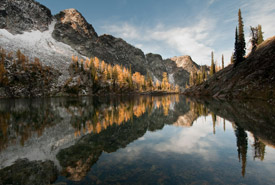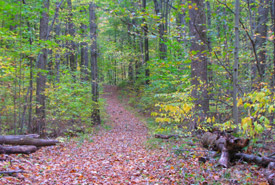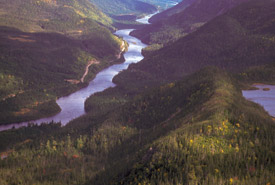New guidelines for privately protected areas

Alpine Lake on Darkwoods, BC (Photo by Bruce Kirkby)
Privately protected areas (PPAs) are protected areas under private governance, as defined by the International Union for Conservation of Nature (IUCN). Private governance includes non-governmental organizations, corporations, for-profit owners, research entities, such as universities and field stations, or religious entities. Despite their significant contributions to biodiversity conservation, PPAs are often under-recognized.
This winter, the International Union for Conservation of Nature World Commission on Protected Areas (IUCN WCPA) announced the publication of Guidelines for Privately Protected Areas. The publication was produced by the IUCN WCPA Specialist Group, with contributions from several nations, organizations and cultures.
As a member of this group, I contributed to these guidelines, which explain how best to manage, govern, evaluate and conserve PPAs globally. The guidelines are the latest in the IUCN WCPA Best Practice Protected Areas Guidelines Series.
These areas, which meet the IUCN definition of a protected area and are under private governance, are highly diverse and involve a wide range of people and organizations. As a result, they face a set of challenges and opportunities that are often distinct from those faced by government-protected areas.

Backus Woods, Ontario (Photo by NCC)
While many thousands of PPAs exist around the world, they don’t always receive recognition, support or incentives from governments. When properly supported, they have enormous potential to connect other protected areas across the landscape and seascape, and conserve important species that might otherwise be neglected. The best practices outlined in the report can help landowners maintain these benefits by ensuring that their PPAs are well managed, sufficiently funded and secured into the future. The guidelines are also useful to policy makers working to better support PPAs.
The report builds upon IUCN’s existing guidance on protected areas by exploring issues related to PPAs and private landowners. It also includes considerations that are specific to certain sub-types of PPAs. These sub-types include PPAs established by organizations outside the typical conservation community, such as for-profit companies and religious entities.

Lloyds River, Newfoundland and Labrador (Photo by NCC)
The guidelines also discuss the role that networks of landowners can play in connecting otherwise isolated conservation practitioners and initiatives. The report discusses how data recorded on PPAs can be used as a tool to raise their visibility, as well as enabling them to be counted toward international conservation goals, such as Aichi Target 11 of the Convention on Biological Diversity.
The best practice guidelines are supported by a set of case studies from a diverse range of landowners and ecosystems around the world. The guidelines are the result of an extensive consultation with IUCN WCPA members and its Specialist Group on Privately Protected Areas and Nature Stewardship. Material support for the publication was generously provided by the German Federal Agency for Nature Conservation and the Turner Endangered Species Fund.
In Canada, there are still very few PPAs recognized by provincial jurisdictions, even though the Nature Conservancy of Canada, Ducks Unlimited Canada and the land trust community hold hundreds of thousands of hectares of protected lands under conservation status. In the lead up to 2020, where Canada aims to announce a successful effort to protect 17 per cent of its terrestrial and inland waters, NCC is working with other PPA owners and the National Steering Committee of the Pathway to Target 1 to have PPAs in Canada better recognized.
Source:


